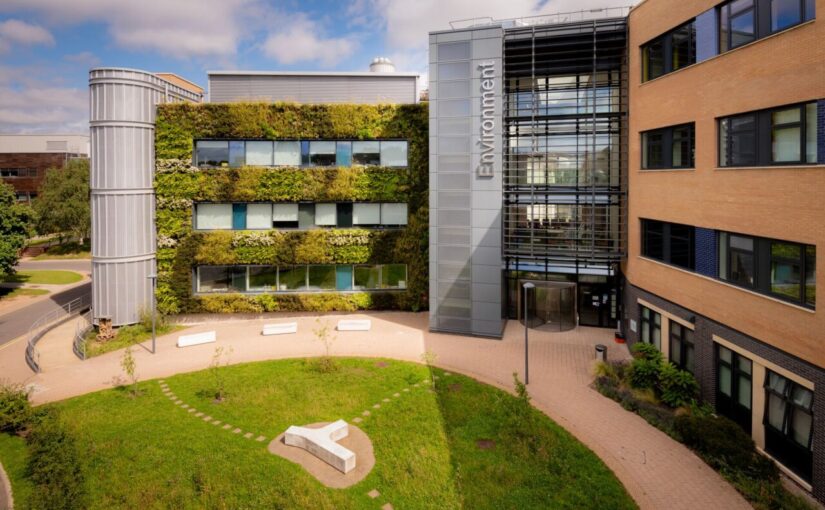This is part of a series on the economics of climate change and flooding by IGDC member Paul Hudson. Here he looks at opportunities for creating more sustainable and resilient cities.
The world is increasingly urbanised, with more people and economic activities being funnelled into urban areas at an unprecedented rate1. Therefore, it is unsurprising that urban areas are major hot spots of future climate impacts2. Urban areas are responsible for a significant portion of greenhouse gas emissions, as well as air and water pollution, and are often associated with the loss of biodiversity and environmental outcomes as they expand. However, there is growing interest in using nature-based solutions to address these challenges and create more sustainable and resilient cities. In particular, private landowners can play a crucial role in implementing these solutions.
What are nature based solutions?
Nature-based solutions (NBS) are defined by the International Union for Conservation of Nature (IUCN) as “actions that protect, sustainably manage, and restore natural or modified ecosystems to address societal challenges.” In urban areas, NBS can take many forms, from green roofs and walls to urban parks, gardens, and greenways. These solutions not only provide environmental benefits such as carbon sequestration, air purification, and flood mitigation but also offer social and economic benefits such as improved mental health3 and well-being4 or increased property values5.
Why focus on private land?
While publicly provided green spaces, such as urban parks, are critical components of NBS in cities, private land is more plentiful and often NBS even if implemented for the public good require space, which is often privately owned and used. Therefore, private landowners can make a significant contribution to urban sustainability by implementing NBS on their properties or working with governments to jointly use their land for the social good. The potential impact of private landowners on the environment and society is considerable simply because of the scale of action that can be unlocked if suitably incentivized.
What are some examples of NBS on private land?
One of the many examples of NBS is the creation of green roofs and walls. These features can provide numerous benefits, such as reducing energy consumption by insulating buildings, capturing stormwater runoff, and improving air quality. In addition, green roofs and walls can also provide habitat for wildlife, improve the aesthetic appeal of buildings, and create opportunities for urban agriculture.

Another example is the creation of urban gardens and farms. These spaces can provide numerous social and economic benefits, such as improving food security, creating job opportunities, and promoting community engagement. Urban gardens and farms can also provide environmental benefits, such as reducing food waste, improving soil health, and increasing biodiversity.
Private landowners can also create green corridors and wildlife habitats on their properties. Green corridors can provide critical connectivity between fragmented habitats and improve the movement of wildlife through urban areas. By creating wildlife habitats on their properties, private landowners can help protect and enhance biodiversity in urban areas and contribute to the recovery of threatened and endangered species.
What are the challenges of implementing NBS on private land?
One of the most significant barriers is the lack of awareness and knowledge among private landowners about NBS and their benefits. Many landowners may be sceptical about the effectiveness of NBS or may not be aware of how the various benefits provided by NBS can be captured or used, or even if the benefits provided sufficiently replace the benefits people get from how they currently use their property.
Another challenge is the cost of implementing NBS on private land. While some NBS approaches, such as green roofs and walls, can provide a return on investment in the long run, others, such as wildlife habitats and green corridors, may require ongoing maintenance and management.
How can we implement NBS on private land?
When investigating how we can understand the patterns in how people use and develop NBS on private property, there is no universal or one-size-fits all solution simply because for nature to be successful it needs to be designed and implemented within the local social and environmental context. However, there are some common patterns in what makes it more likely for NBS to be successfully implemented.
Let’s use the example of NBS to help reduce the threat of flooding to cities. We can break these conditions down into 4 main groups:
- Physical conditions of the area – the NBS should work with the local environmental conditions, both today and in the future.
- Social interactions – a degree of trust and agreement between parties on what interactions are being taken and why .
- Financial resources – an understanding of where the money to finance and maintain the project is coming from.
- Institutional setting – that the legal setting allows for such interactions to take place.
All in all, these 4 factors come together in the observation that if we want to use more NBS to address a range of climate and environmental threats we need to find the opportunities through which people can build trust and stable relationships, or find the opportunity that truly embraces the multi-functional nature of, well, nature and find the NBSs that reinforce the good outcomes the person giving up their land wants in addition to the primary benefit the planner wants to create “win-win” situations.
Read the full paper Natural flood management: Opportunities to implement nature-based solutions on privately owned land by Thomas Thaler, Paul Hudson, Christophe Viavattene and Colin Green.
About the author

Paul Hudson is a Lecturer in Environmental Economics.
He is a generalist researcher in the fields of climate change adaptation, disaster risk management, and nature-based solutions for both, looking at the role of the individual in responding to the threats of climate change and disasters (flooding specially).
His current projects look into how we can build the business case for private sector investment in a range of nature-based solutions. Before joining the University of York, Paul completed his PhD research into the use of flood insurance at the Institute for Environmental Studies (IVM) at Vrije Universiteit Amsterdam, after which he spent four years at the University of Potsdam’s Institute for Environment and Geography’s natural hazard risk research group.
- 68% of the world population projected to live in urban areas by 2050, says UN, UN Department of Economic and Social Affairs website, retrieved 2 May 2023. ↩︎
- IPCC Report: Cities are hotspots of climate impacts, but also a crucial part of the solution, reliefweb website, retrieved 2 May 2023. ↩︎
- Gregory N. Bratman et al., Nature and mental health: An ecosystem service perspective. Sci. Adv.5,(2019) ↩︎
- Tetsuya Tsurumi, Shunsuke Managi, Environmental value of green spaces in Japan: An application of the life satisfaction approach, Ecological Economics, Volume 120 (2015) ↩︎
- Gibbons, S., Mourato, S. & Resende, G.M. The Amenity Value of English Nature: A Hedonic Price Approach. Environ Resource Econ 57 (2014) ↩︎

